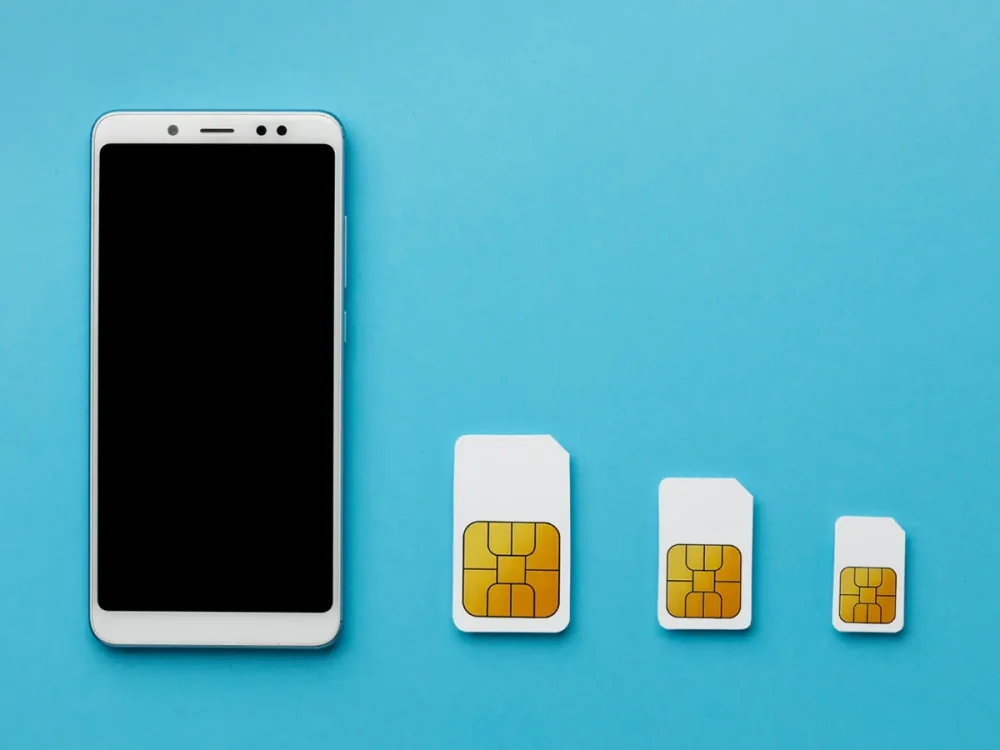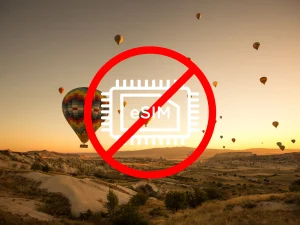What is a SIM card?
Let’s start with the basics. The SIM card, “Subscriber Identity Module,” is a small chip that, when inserted into different types of mobile devices, allows connection to the mobile network of the operator that produced the SIM.
What is a SIM card used for?
Do you really know all the functions of a SIM, beyond the most obvious one related to your phone number?
Let’s discover them together:
- It connects you to the mobile network: thanks to the SIM card, linked to a mobile network operator, you can make calls, send messages, and browse online.
- It stores data: the SIM contains some essential information, such as:
– IMSI (International Mobile Subscriber Identity): a number that identifies a user on the mobile network… that is, your phone number!
– ICCID (Integrated Circuit Card Identifier): the unique code that identifies the SIM card.
Types of SIM cards and sizes
While smartphones are getting larger, SIM cards are getting smaller! But as we know, size doesn’t matter; the functionalities remain the same!
| SIM Type | Technical Name | Dimensions |
| Mini SIM | 2FF | 25×15 mm |
| Micro SIM | 3FF | 15×12 mm |
| Nano SIM | 4FF | 12.3×8.8 mm |
Differences between SIM cards
As mentioned earlier, the size of the SIM does not affect its functionalities or the quality of the connection. It is simply an evolution driven by the potential of new technologies and the needs of smartphones over time.
- Mini SIM (2FF): Until 2010, it was the standard SIM for mobile phones, a nostalgic memory for Millennials.
- Micro SIM (3FF): It appeared alongside first-generation smartphones, smaller than the Mini SIM but with the same “base.” Some operators provided a Mini SIM format pre-punched to become a Micro SIM when changing phones, while others who didn’t have this option could simply “cut” their Mini SIM to make it a Micro SIM.
- Nano SIM (4FF): The smallest on the market, which must be purchased as it is! It’s not possible to cut a Micro SIM to make it a Nano SIM, as its thickness (0.67mm) is less than that of a Micro SIM (0.76mm).
Advantages of the Nano SIM
It is simply the SIM suited for modern smartphones, which do not have a slot large enough for Micro SIMs. Additionally, the reduced size of the Nano SIM helps save plastic… but be careful when handling it, as it is very delicate!
If you’ve purchased a new smartphone and are still using a Micro SIM, you can request a replacement with a Nano SIM from your mobile operator.
eSIM: the digital SIM!
As we mentioned, SIM cards are getting smaller… until they disappear!
The eSIM, “Embedded SIM,” is a virtual SIM whose technology is integrated into the latest generation smartphones.
Advantages of eSIM
- No physical card: the eSIM doesn’t require a physical support, it is activated digitally through the QR-CODE provided by the mobile operator.
- Flexibility: you can change your operator with a click, without having to swap the card. You can install multiple eSIMs on your device at the same time (but only activate one at a time).
- Increasing compatibility: more and more smartphones, tablets, and smartwatches support eSIM technology.
eSIM.sm: the best choice for travelers!
If you love to travel, the virtual SIMs from www.esim.sm are the best solution for you, allowing you to connect to the internet in over 190 countries worldwide, without having to purchase a local physical SIM and without worrying about roaming costs.
Why choose eSIM.sm?
- Offer: On our portal, you can find one of the largest varieties of plans by country. This way, you can choose and pay based on your actual needs.
- Simplicity: Our eSIMs are installed in just over a minute, thanks to the QR-CODE you’ll receive via email immediately after purchase.
- Support: Our customer service is available 24/7, in all languages.
But it doesn’t end here! Our list of compatible devices is growing every day! Remember to always check your smartphone’s compatibility before proceeding with the purchase.
How to choose the right SIM for you?
To choose the right SIM, you need to consider these factors:
- Smartphone compatibility: This applies not only to our eSIMs but to all types of SIMs, as different phone models support different types of SIMs. Generally, if you buy a modern smartphone, you will need to use a Nano SIM.
- If you travel often: Consider purchasing eSIMs for your destinations, so you don’t have to change your SIM card frequently (risking losing it) and reduce the plastic waste associated with using temporary SIM cards in the different countries you visit.
In conclusion, choosing the right SIM depends on the mobile phone it will be used in and any travel or international connection needs.








